Totally Unnamed Gaming Column - Towels, Devils and Moe Bombs
by Mutsuki,

|

|
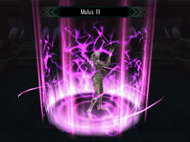
|
|

|
|
 | |
Welcome to a new edition of the unnamed gaming column, where this time we'll get to looking at some of the releases on the PS2 which came out over the last twelve months which you probably missed out on trying. Please sit down and enjoy the ride, as we tour the dark and mysterious demon world of Besek, go back to school at Al-Revis for a second year, and look at the mystifying and somewhat odd world of Ar Ceil.
I did promise that we'll cover rolling a ball, and that ball rolling is in fact Katamari Forever on the PS3 where you get to make stars out of all sorts of stuff - It's special and it's the subject of a detailed review which we'll be rolling up any day now.
So the question becomes... Can we save the world with Moe, or will it end us all?
[Zuiko] PS2: Eternal Poison (Flight-Plan/Atlus)
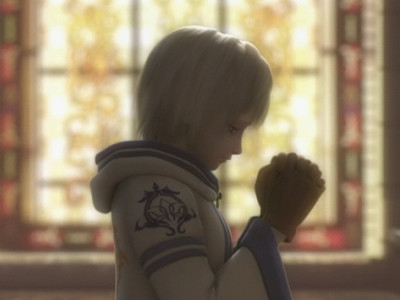
|
|

|

|
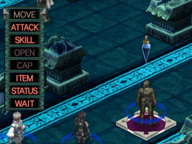
|
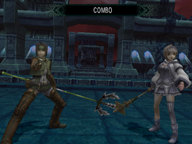
|
| Probable Rating | PG - Mild Adult Themes, Violence |
| Release Date | 11/11/2008 |
| # of Players | 1 |
| Availability | Import: Common |
| Language | English |
| Fluency/Literacy Level | Basic |
| Special notes | Every English copy of the game came out with a soundtrack of some of the game's music. |
The Strategy/RPG genre has never been in dire need of new games, especially on the Playstation 2, but recently we've seen many games being released – Disgaea and Phantom Brave to just name a couple. Produced by Flight-Plan, the company responsible for the Summon Night series, adds another title to an already full library of console Strategy/RPG games. Does Eternal Poison innovate the genre with new ideas or will it become another forgettable title?
Eternal Poison sets itself apart from other games with its European gothic setting. Set in the Kingdom of Valdia, a demonic realm known as Besek has suddenly appeared in the kingdom and its Majin have kidnapped Valdia's Princess. The King of Valdia has issued a decree to anyone willing to help save the Princess, thus begins the story of Eternal Poison.
You basically play through the story from five perspectives, with only three are available at the start. One of the storylines follows Thage and Raki, a witch and her Majin canine, who seek to obtain the eternal poison for her own. Another follows Olifen, Commander of the Valdian Knights, and his quest to save his beloved Princess and then there's Ashley, a protector of the church of Valdia who is ordered to examine Besek in order to find her lost mentor.
The game is very linear without many branching paths, with each story taking anywhere between 5-10 hours to play through. While there is a small amount of character development as you progress through the story, it can be compounded by the fact that you may not know which paths to take. As is typical of a JRPG there are several endings for each story, depending if you have fulfilled certain criteria.
The majority of the game uses an isometric view, adopting the typical grid base system found in most Strategy/RPGs. Attacking is Turn-based with each character's turn being decided on their speed rating. Each levels is crowded with enemies. Though all of them have major weaknesses to exploit, so battles aren't as intense as they could be. Skills are limited to a set number of uses per scenario, depending on how proficient your character is in the use of the skill, as well as any natural learning in the skill. This means that you need to be using each turn effectively in order to gain experience for your characters, otherwise you'll quickly find certain characters severely underpowered.
The unique element to this game is the capturing mechanic. It allows you to capture Majin and bosses in the battlefield to use them as allies. The problem however is that there isn't really any merit to capturing them, as they're set to a specific level and do not grow as you use them in battle. Although in order to progress to certain endings, you may need to utilize them to fight against certain bosses. In addition, Majin that are captured do not hold up well in battle and you'll end up using the other human characters most of the time - you can summon Majin anytime, but they will cost you party space which could be used by your regular characters.
Capturing Majin is a lot harder than it first sounds, as you need to do enough damage to reduce their HP to zero and then enough damage on top of that to actually force them to stay on the field in order to capture them. There are no onscreen HP meters or icons during battle, requiring you to either highlight them or access a menu screen to view weaknesses of enemies, which can prove downright confusing. Menus are a bit of a hassle and will take some time to get used to. As you progress through the game you will eventually be able to change classes which will allow you to focus on a particular subset of a character's skills.
Each time you finish a level, you'll be sent to a town in which you can recruit new allies and sell off your captured Majin to gain new rewards and benefits. Although the towns act as somewhat of a hub world, progress is linear so there are no other levels to select or anything to do other than continue the story forward.
The levels themselves are played with 2D sprites on a 3D/Isometric background like a lot of Strategy/RPGs. Attack Sequences however, are in full 3D, but the problem with this is that there is a small amount of loading before each sequence and you'll soon be trying to skip them. Fortunately, you can tap a button to skip them, as well as being able to turn off the sequence in the menu, but it's buried in the options.
Each of the set pieces are rich in the gothic theme, but can be a bit bland at times as there's usually not a lot of variation to each one. Characters designs are all well drawn out but the dark tone and nature of each one doesn't really grip you into the world unless you have a liking to the style. Each Character is also voiced and each plays their part well, though there aren't any standout performances. The soundtrack of the game plays out well with many orchestral tracks which gives the game some life and accompanies the tone of the game well.
Once you finish each character's story, there really isn't anything to come back to as you'll only be able to replay each character's story again without any other extras or incentives to keep going, unless you really want to complete all the entries in the book. Items and Majin you capture in one story does carry over to another, so there's no need to go through previous stories unless you missed something on the first play through.
Overall, Eternal Poison is a game that has a couple of design flaws and doesn't bring a lot to the genre. But if you are after a new Strategy RPG and can get over its horrid menus and somewhat forced game progression that curves the difficulty up, there may be something to like from this game. It's dark but beautiful gothic theme will definitely appeal to some. Importers looking to give this game a go can obtain the US version from any online Import store.
[Mutsuki] PS2/PSP: Mana Khemia 2: Fall of Alchemy (Gust)

|
|

|
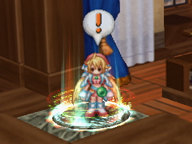
|

|

|
| Probable Rating | M (Violence, Adult Themes, Sexual References) |
| Release Date | 29/05/2008 |
| # of Players | 1 |
| Availability | Import: Common |
| Language | English/Japanese |
| Fluency/Literacy Level | Basic |
| Special notes | It can be downloaded as a premium PSP title in Japan. |
Mana Khemia 2: Fall of Alchemy is a direct sequel to last year's Mana Khemia: Alchemists of Al-Revis released on the PS2 or Student Alliance if you picked it up on the PSP. In this sequel, you'll follow on with the tales of the Academy of Al-Revis... and due to the events of the first game, you'll find that it's fallen down, quite literally, from the heights the first was based from.
It makes for a somewhat odd premise of the game, particularly if you have played through the first one as you will find that some of the characters from the first game have taken up teaching positions. The game follows the paths of two new sets of students as they learn at the new academy, which will soon close the course they're enrolled in due to saving costs. At the beginning of the game, you'll be offered to follow either Raze, a mostly silent swordsperson who works for Lily, or Ulrika, a 'country bumpkin' who has a mana egg, and after playing one side, you'll switch to the other to see their alternate prespectives.
However, the execution of this, as well as the execution of the game's main cast feels a bit stale for some reason. Sure, we have some pretty unique designs, including a fairy who's way too big and strong, a tsundere with her moe mana in a maid outfit, and an animal that can attract nearly every girl alive, except the execution sometimes feels a bit subpar as if they rested on the laurels of the first game. Sometimes you just don't find the drive to find out the details of the cast, which was something the first game excelled at, and was part of its main draw.
Some characters you'll smile as you watch them abuse each other, and others you'll find yourself wondering if you really want to know. There's a wide variety, but you'll find that it can prove a bit hit or miss sometimes, and the Voice Acting in English can be sometimes over the top, particularly with some of the accents. You have the option to switch the voiced language if you want though.
The game gets you sent out on assignments which are essentially a series of trials where you are given an objective to complete, and are graded on that. The missions can range from beating a certain set of monsters, to creating an item with certain properties. Just like any other school, doing really poorly means you can fail, and if you do that badly, you'll be made to do catch up assignments.
Alchemy, which is the game's main premise, is actually somewhat fun as you explore the areas you're let into, and as you go hunting for ingredients, you'll be playing minigames which will determine exactly what you get. It can prove novel sometimes, although it can prove repetitive, given the amount of time you spend on each game to get items.
Making items is a case of learning the basic alchemic formula, then playing around with it. There's incentive to experiment a bit, as trying different items will result in unlocking new paths. As well, the quality of the items will determine just what you end up making which can lead to a lot of time trying to figure out how to get the result of your choice.
Other characters will join in, helping modify the results of the alchemy, and it is quite possible to make even really poor items work for you. Sometimes making items with certain characters helping out can net some interesting skits and new items to try creating, which adds a little more to the system.
Making an item will also unlock a character's ability to purchase various stat boosts or new skills, and a third option will be available if you make the best version of an item. This means you'll need to constantly make new items as you get the recipes. The Grow Book screen which you will need to access to spend points on will strangely lag from time to time though.
As you spend time running around trying to collect stuff to make the grade, you'll find that all enemies are represented by blobs, and as you come into combat with them, the game will prompt you to press a button, getting it right gives you a headstart in combat, or if you're strong enough, kill them outright. As well, there's other sequences where you'll be asked to hit the right button to succeed.
Combat in the game is handled fairly well, using a turn based system where actions will set people back an amount of time, and stunning an enemy is possible if you beat someone up enough. It can prove fairly difficult though, particularly if you have played the first one - a lot of the big loopholes that appeared in the first game have since been closed with the latest iteration of the combat system.
The animations and the feel of combat are pretty well done, as you flail with the wide and diverse set of attacks which will eventually gain as you synthesize items. Sometimes the difficulty can swing wildly, as some bosses can easily trounce you once, then when you try again, prove to be complete pushovers without modifying your combat plans, and this is before you change the game setting from normal to hard.
As it is almost expected for a NIS America title, there's also a fair share of bugs, although nothing that crippling... one would hope anyway. You'll find that you won't be able to read the jobs board if a certain character is in the lead and sometimes you're left wondering how to make a certain item because it's just seemingly unavailable. The latter can only be resolved by playing the other lead in a new game plus.
All in all, it's a game that can prove fun at times, although for those who played the original you may feel that it proved a little bit of a letdown, due to a few design decisions. If you want to experience school in a fantasy setting, the game will fit right up your alley though.
For the purposes of this title, you have more than a few options, depending on how long you want to wait - The PS2 Japanese version is available as a Sony Hits rerelease, and the game did get rereleased as a PSN PSP downloadable game in Japan, with expectations of a US release.
For those who like their games in English, you can hunt down the Rosenqueen version which at the time of writing can still be picked up directly from them, which came with a poster the normal edition didn't. It's only a poster though, as all regular US editions come with a soundtrack, so you can also get it from any major import store online, or even ask nicely at a local import shop.
[Mutsuki] PS2: Ar Tonelico 2: Melody of Metafalica (Gust/NIS America)
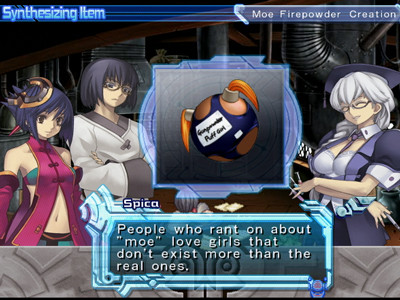
|
|

|
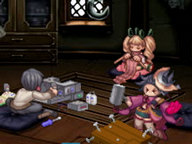
|

|

|
| Probable Rating | M (Violence, Adult Themes, Sexual References, Nudity) |
| Release Date | US: 20/01/2009 EU: 05/06/09 |
| # of Players | 1 |
| Availability | Import: Common |
| Language | English/Japanese |
| Fluency/Literacy Level | Advanced to understand the innuendo |
| Special notes | A lot of extra material was created, including Drama CDs, a concert CD and various art in Japan. |
Welcome to the musical world of Ar Tonelico 2, where song is a form of power and diving into girls is not just a metaphor. Given the sheer amount of innuendo and very suggestive dialogue, it'd make even Super Robot Taisen OG Saga look tame, so don't say we didn't warn you if you don't like being hit heavily with sexual implication in your RPGs.
The storyline is deep and complex, as you find yourself on a tower in Ar Ciel where there are females in the world who can literally sing their way into the power known as Reyvateils and often travel with guardians who will defend them as they sing songs.
You'll find yourself getting thrust in the politics of the game as Croix, a young knight, where no one side is right or wrong as they drive to achieve their objectives, and the game branches as you're forced to choose your loyalties. Fortunately, even though the game drives itself on politics, it never gets so complicated that you lose track, and coupled with a reminder system, you should find yourself if you put the game down for a while. Sometimes though, the game will instruct you incorrectly.
The characters you meet are both interesting and lively, and surprisingly, most people have their dark sides. Particularly some of the main characters, which you can explore along with the main game storyline by taking up the cosmosphere concept - Basically where you go with the girl of your choice and you get to go in a visual novel where you get to dive into the girls and understand their subconscious. It's surprisingly believable, incredibly suggestive at times, and refeshing considering that their minds are nothing like the outside world they inhabit.
Playing through this world will also net you some real world bonuses, such as access to stronger songs or even new costumes, and the opportunity to talk with them while awake. This will grant conversations where you get to know a little more about them. On top of that, you can even learn to create items at stores, netting you new items to work with, as well as amusing conversations... which can result in more conversations with the girls when you talk with them one on one.
Just to throw more fun into the mix, the girls themselves will talk among themselves, landing some other bonuses, and you'll even get to have conversations while they're bathing together, as the game relies on an odd mechanic to level them up compared to all your front line characters.
As well, the interaction you can have with other characters as they appear in the game is long running and long lasting. Essentially, the game draws you into the world because of the fact the characters are unique in their own right, and feel as if they're real people, if in many cases, somewhat quirky. You can easily find yourself going 'I just want to find out if she's got anything else to say' well past your bedtime, if you really like the character.
As you fight to defend the path you decided to go down, you'll find yourself exploring in the rich world, and in combat with various monsters and people. The gameplay is hard to describe simply, as you alternate from defensive mode to attack mode. Defensive mode is where you can reduce damage to yourself and your charge by good timing with the square or x buttons. When it's your turn to attack, you can select the types of attack, allowing you to boost the parameters of the song you're currently casting, boosting their power, regenning MP, improving the power of their harmony, or improving their sync.
If you have two Reyvatails in your party at once, you can syncronize together to perform a super song which can utterly decimate the field if done right. The gameplay is surprisingly fun, and it rewards you for getting things right, particularly since scoring a perfect in defensive mode will net you no damage from the attack. The game can find itself chugging a little particularly when things get fast and furious though, meaning you may miss a few hits you could normally make.
For most part, the game itself has very well done sprite work for a PS2 game, the anime style artwork that accompanies the game is beautiful, and you can't help but wonder just exactly how they were inspired. The game mixes three dimensional as well as your standard two dimensional backgrounds with the detailed sprite work, with anime cutscenes for various actions taken by you in game. Even though some of them are short, they're quite a marvel to watch.
The music, which the game focuses on as a main standpoint, is something quite stunning. It can mix and match sytles, from a chorial in the game's made up language, to throwing in techno or grunge, and even going to folklore singing. The variety of music available is diverse, and almost always fits the mood. Unlike a lot of other games which depend on music as a main mechanic, Ar Tonelico 2 delivers, and it's arguably so good that you could listen to it anywhere.
Sadly, even though the game itself is lined up to be one of the most interesting experiences you could ever have, there's one problem - The game itself has a fair few issues for an English release, which is surprising in a major PS2 title.
Some of the Japanese text is still prevailant in the game even though it's a US release, most likely it was overlooked. Other times, you'll see odd translation errors, where people will refer to something that didn't ever happen, and sometimes you'll just find yourself wondering who spell checked it.
Given how the game will actually from time to time appear to crash deliberately or even appear to reset as part of the game itself, it can prove disconcerting when the game actually can freeze up for real on a side plot. This is only prevailant in the US release, with the European PAL release having the problem fixed. For those curious, it happens when a certain attack is executed, which means that person has the game ending attack.
Other times, setting the Japanese Voice Acting will sometimes decide to wander to English halfway through too. It's disconcerting if you're a purist. Although it's a lot of fun to listen to the English Voice acting when it comes to the really innuendoish lines, you might not appreciate being shuffled arbituarily from one language to another.
And a secret note, for those who haven't played all the versions of the game - Probably due to space constraints, some of the Japanese Voice Acting has been taken out of the English release, even if you decide to turn on the Japanese Voice Acting.
It's really a shame that the game can be marred, considering I've played all three releases through. In a way, it's not that surprising given the depth, but sometimes one has to wonder if another six months of development could have done it more justice.
Even with all those notes above, the game itself is something that if you want an experience that draws you into a rich and wonderful world, and would most likely make some people blush as well as laugh and cry along with the characters. Fortunately, playing the original isn't that necessary, as it all happens in a different part of the planet, although there are references to the original Ar Tonelico.
There's a few options if you want to import the game - the US version of Ar Tonelico 2 came with a few features including a artbook and a small soundtrack collection. If you can find one of the Rosenqueen versions, it also came with another soundtrack with even more songs.
The PAL version of the game was released in Europe and can be obtained directly from places like GAME's UK website, and only comes with the game, but it's the one version of the game which won't crash on you ever (Apart from when the story demands it) and can be played on an Australian PS2.
As well, there's a store in Melbourne which has imported the PAL version, and some other import stores in Australia may get it for you on request.
If you really want a Japanese version, the playstation best edition of Ar Tonelico 2 came out in Japan recently, and if you can arrange for a third party in Japan to buy it for you, it can be obtained directly from the GUST store at shop.salburg.com. The store also can also provide a whole lot of extras, including a whole host of extra music and drama CDs made for the game, and all sorts of art work.
Just a thought
Now that we've done a quick tour of what's available on the PS2, our next stop will be the Xbox 360, particularly what's available in Japan as well as touch on various anime related titles released in the US.
... you don't believe me? We all know Japan is Sony's home, and Microsoft's the foreign gaijin devil, so what on Earth could the 360 offer to a group of people like us?
Come back next week, and you'll get to find out. Hope you're good at dodging.
Oh by the way, if you haven't given it a shot yet, we've also got a nice competition running. Think you can think of a name for our column?
If so, send your submission to [email protected] (jon at animenewsnetwork.com.au?subject=Name%20the%20Column%20Competition) and you could win fabulous prizes if you win! Up for grabs your choice of either two games mentioned in our first ever column or one game mentioned in any subsequent column until the competition's closing date of 11:59PM Australian EST 31 October 2009. Downloadable games will be either gifted or substituted for an equivalent amount of points/gift cards.
And before I forget...
I also did promise that I'd reveal where our review copies of Blazblue: Calamity Trigger PS3 and The idolm@ster: Dearly Stars DS went. It appears they went to all the trouble of going to the recent A Night in Fantasia 2009 that was held recently.
... And managed to get signed by Chiaki Takahashi (The voice for Azusa, and Lai-chi) and Shiina Go who did some of the songs in the idolm@ster.
Why would I mention this here? Well... I'll let you figure out what's up for grabs.